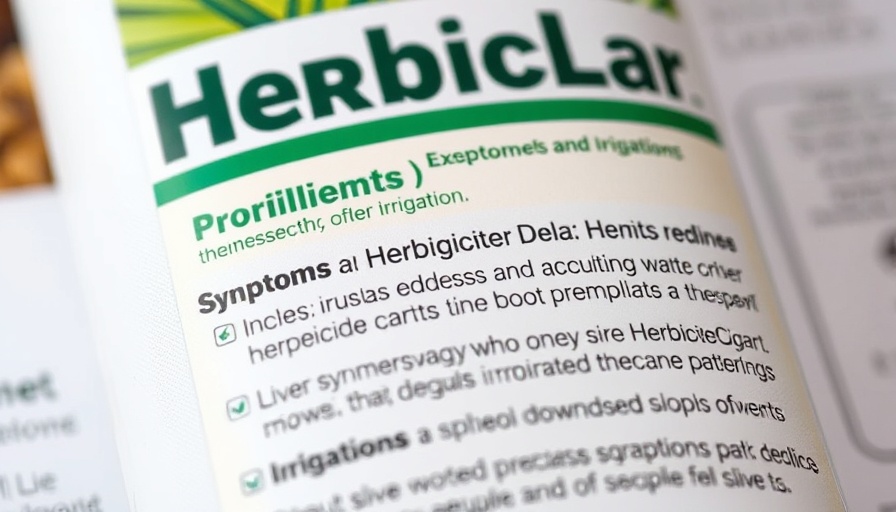
Understanding Rain's Impact on Lawn Care
Rain can be a friend or a foe when it comes to fertilizing your lawn. It’s essential to understand how moisture affects your grass to make the best of your lawn care efforts. The unpredictability of weather can make it challenging, but don't worry—armed with the right knowledge, you can ensure that your lawn thrives.
The Necessity of Soil Moisture
When it’s time to apply lawn products, one key to success is soil moisture. Laws of nature dictate that healthy plants need water—this is why your first step should be assessing the moisture of your lawn before application. As noted in expert analysis, having soil moisture is vital for the efficacy of products like herbicides and pesticides. For instance, the herbicide Celsius specifically recommends that soil moisture be present during application to ensure effective weed control.
How to Decide When to Fertilize
Instead of relying solely on weather forecasts, consider the condition of your lawn. If soil conditions are dry, it’s advisable to water the lawn first before applying any products. Think of it this way: if your grass is stressed from dryness, applying fertilizer will not yield the desired result since the plants aren't capable of absorbing the nutrients effectively. This is especially important for warm-season grasses, which thrive under optimum moisture conditions.
What Happens When It Rains After Applying Fertilizer?
Now, let’s address the scenario where rain occurs after you’ve applied fertilizer. A light rainfall can actually be beneficial, as it helps to dissolve the nutrients and carry them to the soil where the roots can absorb them. However, heavy downpours can wash away fertilizer, leading to uneven distribution and ineffective treatment. Hence, it’s prudent to time your applications around expected rainfall amounts—aiming for lighter rains rather than heavy storms after you’ve spread your fertilizer.
Tips for Effective Fertilizer Application
- Check the Weather: Use reliable local forecasts to plan your lawn care schedule.
- Read Product Labels: Always check the instructions for any specific product you use; agencies recommend different soil conditions.
- Observe Lawn Health: Assess your lawn’s moisture level and health before application—only fertilize if the grass is in good condition to soak up nutrients.
- Consider Local Guidance: Consulting local lawn care experts can provide insights specific to your area, enhancing your DIY initiatives.
Future Predictions in Lawn Care Practices
As homeowners increasingly lean towards DIY lawn care, the focus on understanding how rain and moisture impact fertilization will only grow. Awareness of environmental conditions and their implications on lawn health will serve as a basis for more effective lawn maintenance practices in the future. This trend will likely pave the way for smart irrigation systems and weather-responsive lawn care routines that adapt to the unpredictability of weather.
Bringing It All Together: Simplifying Your Lawn Care
This information empowers you to take control of your lawn care. Knowing when and how to fertilize amid rain can enhance the appearance and health of your lawn. Skills like assessing soil moisture and understanding product labels are invaluable as you navigate your lawn's needs. Embrace the challenges of lawn care, and don’t hesitate to reach out for professional help when needed. After all, a vibrant lawn contributes significantly to your property’s overall appeal and value.
In today’s ever-evolving landscape of lawn care, attention to detail and adaptability to the elements can set you apart in achieving the lush green lawn that serves as a cornerstone of home aesthetics.
 Add Row
Add Row 
 Add
Add 


Write A Comment